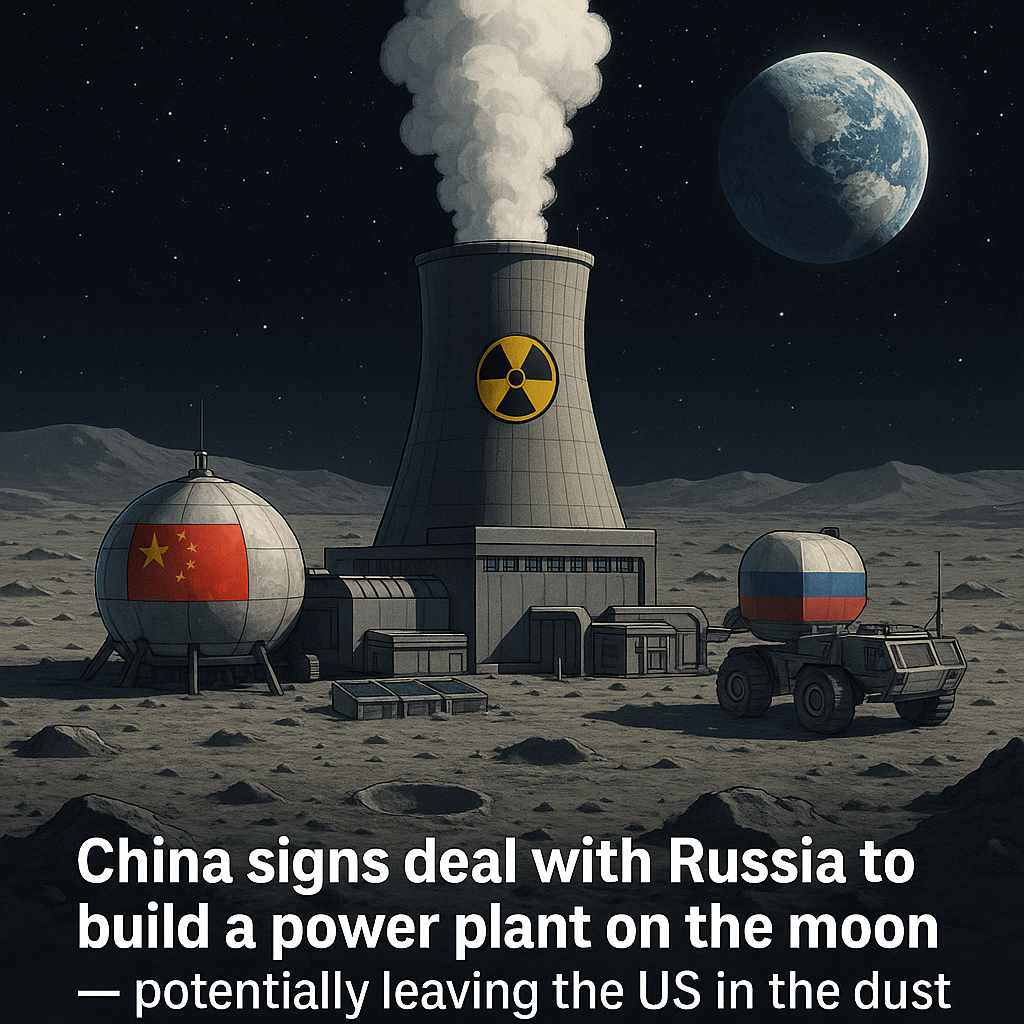China and Russia have signed a major agreement to build a nuclear power plant on the Moon. The International Lunar Research Station (ILRS), a new moon station, will be powered by this plant.
China and Russia Join Hands for Lunar Energy
Both nations are working jointly on the ILRS, a large project. According to a signed document between the two nations, the power plant should be ready by the year 2036.
The main job of this power plant is to provide energy for the moon base. It will help run machines, experiments, and communication systems. Most importantly, it will help keep the station running smoothly for a long time — even when no people are present. Interestingly, the building of this nuclear reactor is expected to be done by robots, not by humans. This kind of work, if completed as planned, could be one of the most advanced steps in space exploration.
The ILRS will be a long-term base close to the south pole of the Moon. Important minerals and greater sunlight are found here. Future missions and research are anticipated to be supported by the base. Additionally, it will test technology for long-term lunar use. Over time, this station may even allow people to stay there safely.
Russia Launches Trio of Satellites—Then a Strange Object Appears From Nowhere
Moon Base Attracts Global Interest
To date, 17 nations have signed up for the ILRS initiative. Egypt, Venezuela, Pakistan, Thailand, and South Africa are some of these nations. This shows that the lunar base is becoming a global project, not just limited to China and Russia.
The Chang’e-8 mission from China will lay the foundation for the project in 2028. This mission will prepare the Moon’s surface for future landings, buildings, and infrastructure such as the power plant that will support long-term operations. It is also expected to carry the country’s first astronaut to the Moon.
In June 2021, China and Russia unveiled their ILRS proposal. They said that between 2030 and 2035, they would send several large rockets to the Moon. These rockets will carry parts of the station and the components for the lunar power plant to the Moon’s surface. Once those parts are put together, the base will be ready for larger missions and more equipment.
China intends to upgrade the station with additional components in the future. These include connections to a space station orbiting the moon, as well as other regions on the equator and far side of the moon. A nuclear power plant is one of the core features that will provide continuous energy to these extended facilities. In 2024, these ideas were presented at a press conference.
U.S.-China Orbital Tensions Surface as Surveillance Satellites Engage in Close Tracking
The ILRS will be powered by nuclear, solar, and radioisotope generators. A dedicated power plant will make it possible to run equipment and life support systems around the clock. It will also include vehicles such as rovers and hoppers to move around on the Moon. There will be communication systems that can send data quickly between the Moon and Earth. These tools, along with the energy from the power plant, will help scientists do their work more easily and safely.
U.S. Lunar Plans Hit Roadblocks
While China and Russia are moving ahead with their Moon plans, the United States space agency is facing some challenges. NASA had been working on a project called Gateway — a lunar space station that would orbit the Moon. This station was supposed to support American astronauts and science missions in space.
However, the 2026 budget plan recently suggested cutting funds for this project. This means the Gateway mission might be canceled, even though a lot of work has already been done to build its parts.
NASA also has its Artemis program, which aims to land astronauts on the Moon again. The Artemis III mission is expected to launch in 2027. It would be the first American crewed landing on the moon in more than half a century if it were successful. However, this mission has been delayed multiple times due to delays.
In the meantime, rovers from China have already touched down on the Moon’s far and near sides. It has also collected minerals from the Moon and sent expeditions to Mars. These steps have given China a stronger position in space exploration.
With the signing of the latest agreement, the cooperation between China and Russia shows a clear push toward long-term moon exploration. Their power plant plan could be a major advantage, especially if completed before other countries build similar systems.
The ILRS is shaping up to be a massive international project, powered by advanced energy systems and supported by countries around the world. As more details come out, the world is watching how this new Moon base takes shape — and how it compares to other lunar projects that are facing delays or funding cuts.




